The Conflict: Pearl Harbour
On the 7th of December, 1941, the Imperial Japanese Navy brought a surprise attack on Pearl Harbour, intending to destroy US defence and weaken their forces.
"[December 7th, 1941], a date which will live in infamy"
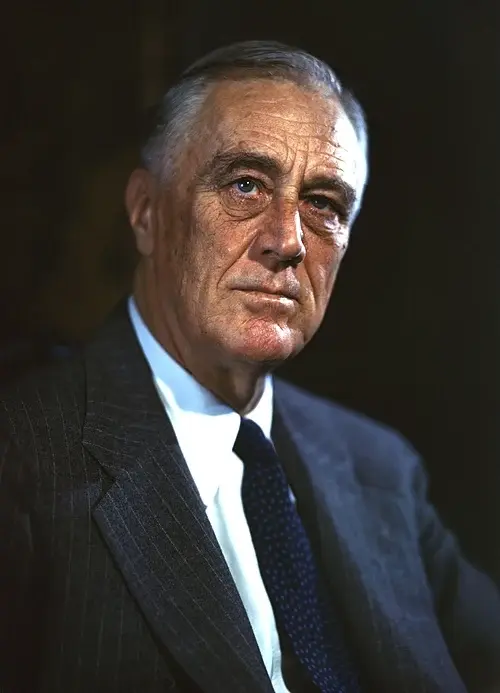
What Happened?
The Japanese launched several waves of attack on the US naval base located in Pearl Harbour, Oahu, Hawaii. They used aerial attacks to target US aircraft, docked ships and large naval ships. The impact was significant, damaging 19 US warships and 300 aircraft, and killed over 2,400 US servicemen.
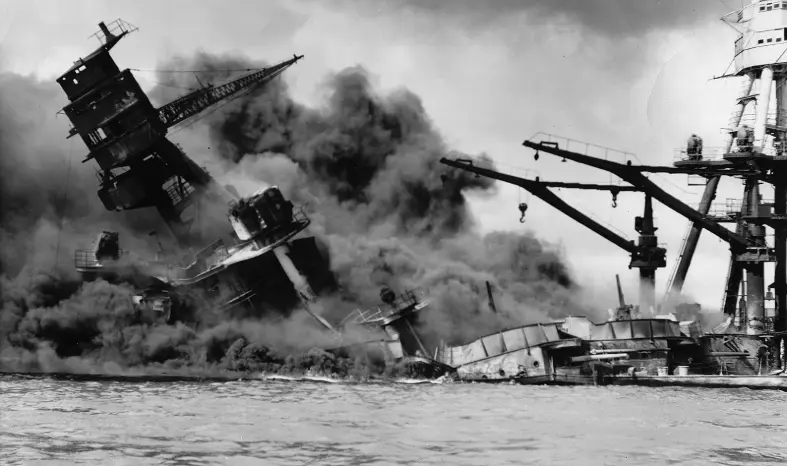
A US battleship sinking during the attack, sourced from Britannica, Pearl Harbour Attack.
The Japanese headed toward their target at 6:10 a.m., sending their first wave, consisting of nearly 200 planes. The first shots fired were by the USS Ward, to a Japanese submarine. This happened at 6:45, also being the first shots fired by the US in WWII. The attack on Pearl Harbour began at around 8 a.m., with the Japanese surprising the Americans with their dive bombers. At 8:10, the battleship USS Arizona was attacked with a bomb weighing almost 2,000 pounds. The bomb landed in the ship's forward ammunition magazine and exploded, sinking the ship and killing over 1,000 of the Americans aboard. The USS Helm fires at a Japanese submarine at 8:17, sinking it. The second wave from the Japanese started at 8:54 a.m., consisting of almost 170 planes. The attack ends about 2 hours after it started at 10 a.m., when the attackers decided to head back to Japan. In total, 2,404 people who were part of the US military or US citizens were killed, 68 of those being civilians.
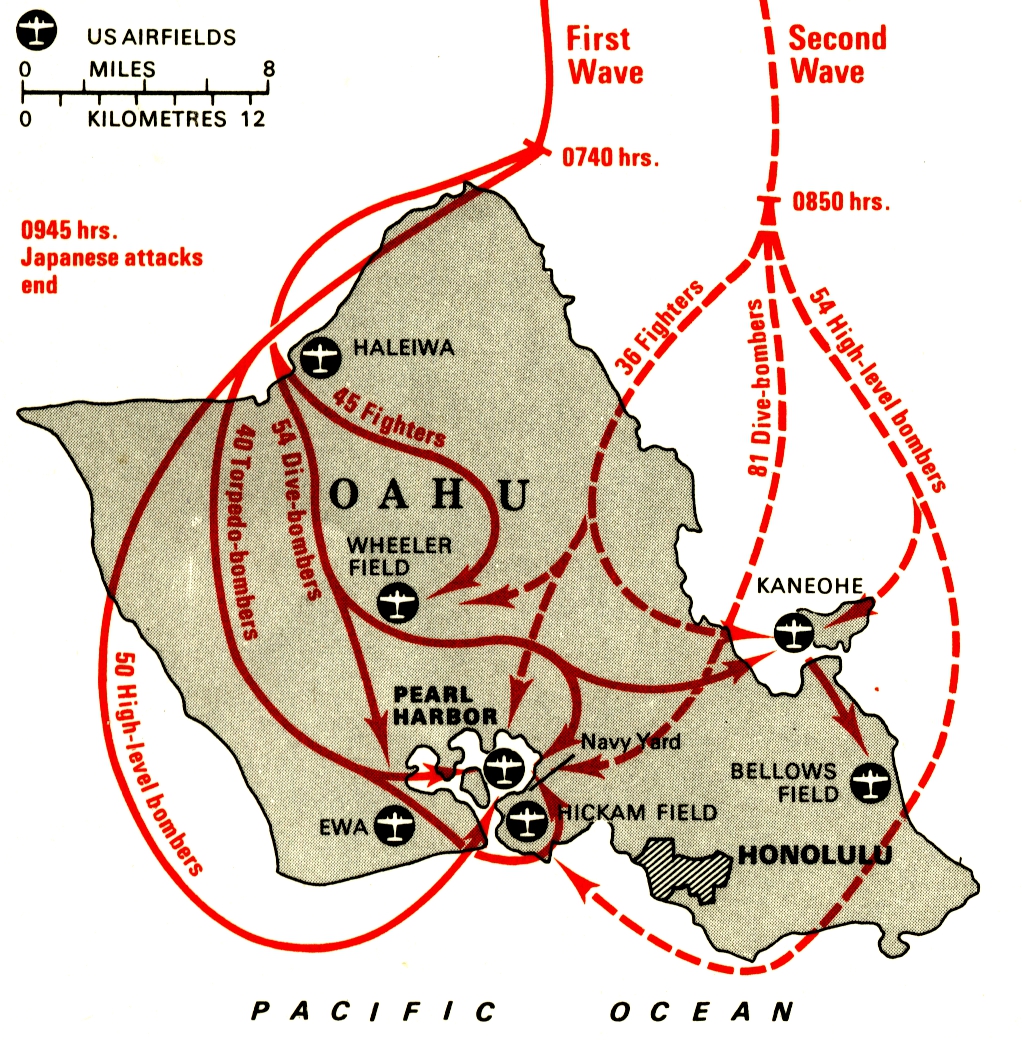
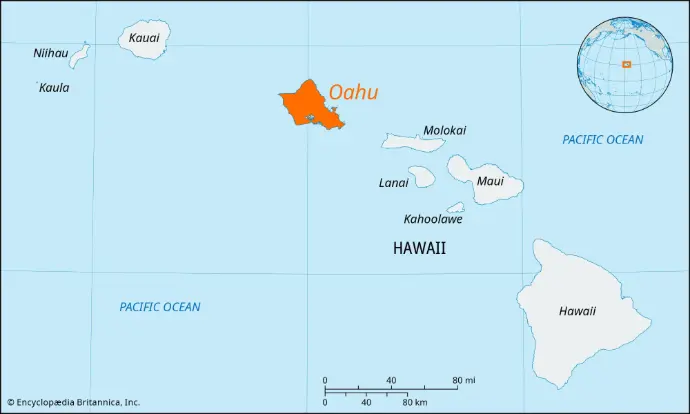
Map of Japan's flight path, Map of Oahu from Britannica, Oahu
sourced from
https://onwar.com/wwii/maps/pacific/01pacific.html.
Why did the Japanese Attack?
Why Japan decided to attack Pearl Harbour could not be simplified into one reason only. The main reasons were its ambition to take over the Asia-Pacific region, desperation for resources, and the inevitable war between Japan and the US.
Lack of Resources
In response to Japan's attack on China and their ongoing war, the United States had halted resource imports to Japan. This was terrible news to Japan, as they were lacking natural resources, especially oil, and heavily relied on imported goods for the country's prosperity. Attacking the US would help them invade other areas with richer land in Southeast Asia without much disruption.
Goal to Take Over the Asia-Pacific Region
Japan had already initiated plans to dominate East and Southeast Asia, having taken over Korea and the Chinese province of Manchuria before the Pearl Harbour attack, expanding its regions and gaining more natural resources. Japan held a concept called the Greater East Asia Co-prosperity Sphere, where the Asia-Pacific region would be ruled fully by Asians, primarily Japan, without the influence of the West. They needed to gain even more territory, and to do so, they needed to take down the United States Army due to the army's bias toward the countries Japan was planning to take over. If America was weakened, Japan would be able to take over the remaining areas more easily.
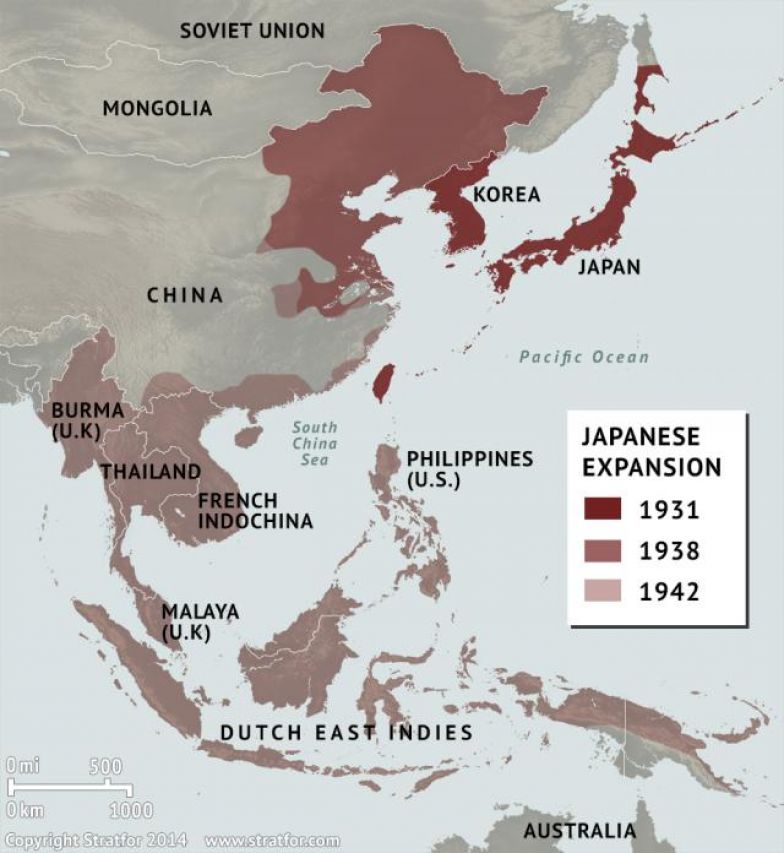
Growing Tension Between Japan and America
Japan knew that it would eventually have to go to war with the US due to their clashing interests in the Pacific area and territories. They also knew that the longer the war went on for, the less likely they were to win it. To shorten the length of the yet-to-happen war, Japan attacked US naval bases in an attempt to weaken its opposing side and secure its victory.